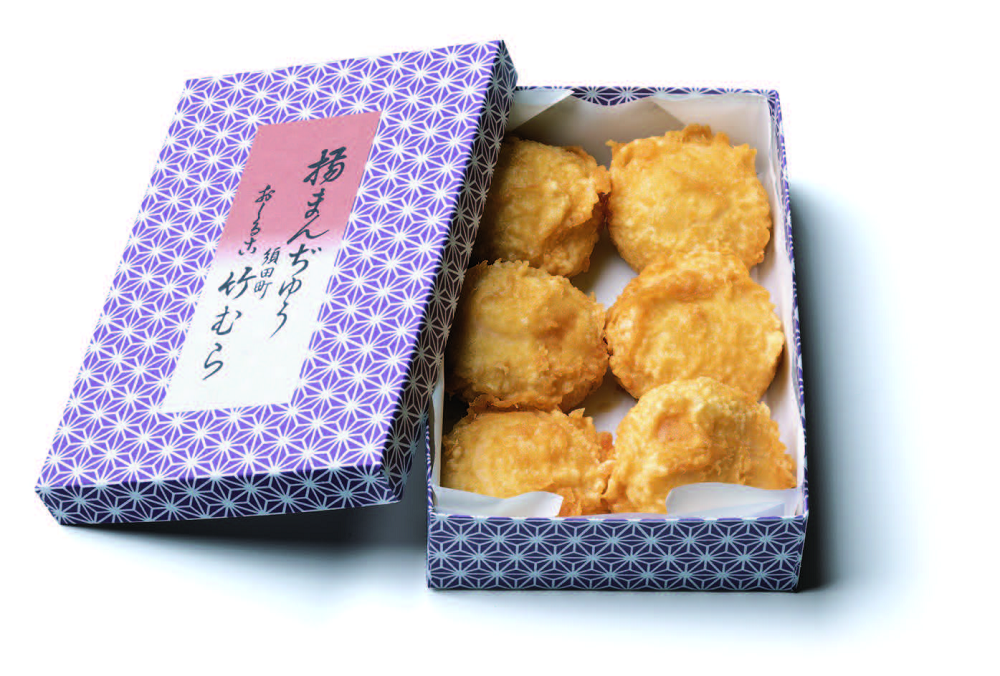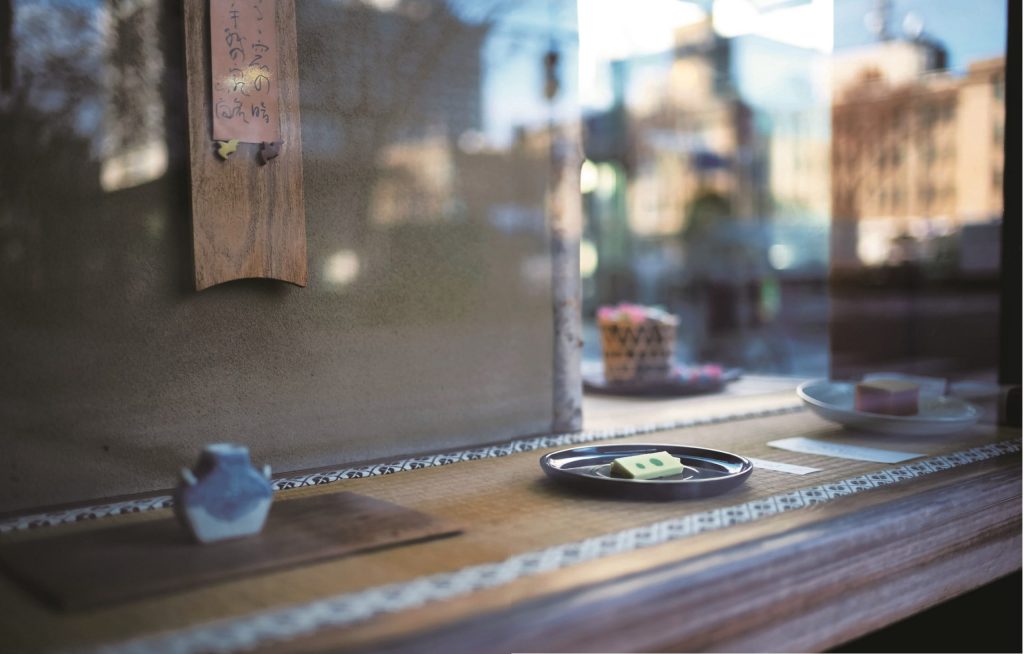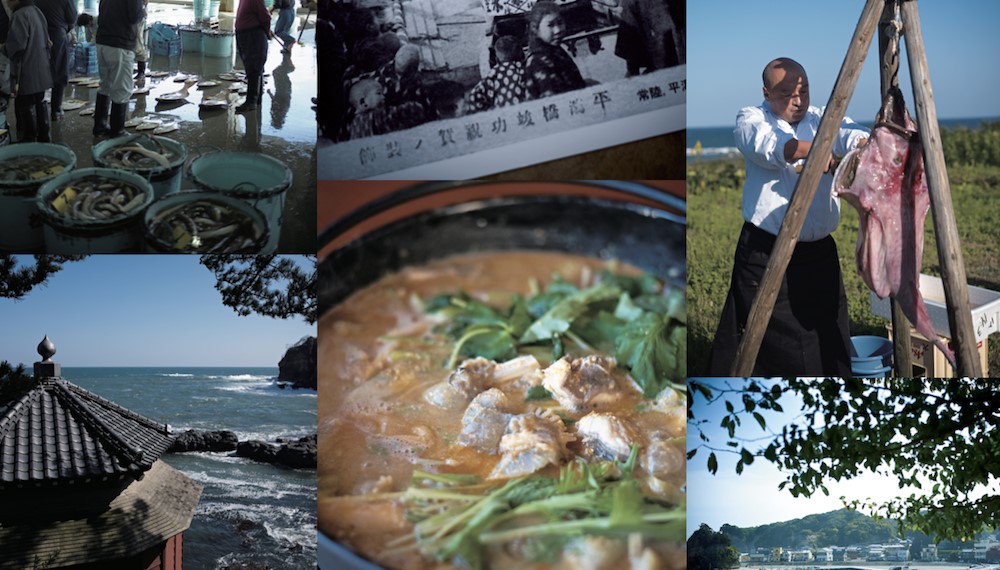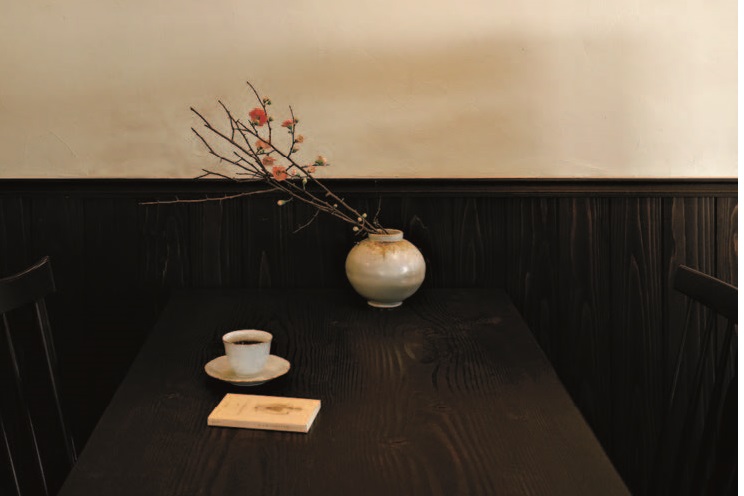Izumo (出雲), home of myths and folk art, and Matsue (松江), a town of handicrafts and coffee. Why not take a trip to the Sanin (山陰) region’s greatest walking paradise?
Select shop ‘objects’
More and more people are attracted to handmade vessels, such as folk art and artist’s pieces, but we often wonder, what makes a ‘good vessel’? The Matsue-based select shop objects answers these questions with simple words and a compelling range of products.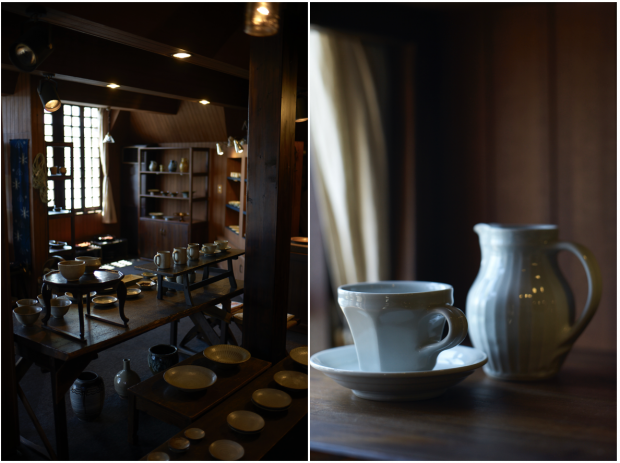 Hand-crafted vessels selected from all over Japan, including the Sanin region. Right: cup & saucer 4,860 yen and pitcher 4,320 yen (both incl. tax) from Shimane’s
Hand-crafted vessels selected from all over Japan, including the Sanin region. Right: cup & saucer 4,860 yen and pitcher 4,320 yen (both incl. tax) from Shimane’s
Hakujikobo (白磁工房).
“What I like is ‘something that touches the heart’.”
The owner of the shop, Sasaki Hajime (佐々木創), smiles shyly as he holds a white porcelain coffee cup in his hand and says: “Plates and coffee cups are tools of daily life. If you want to pursue ease of use as a tool, there are many more rational ones out there. But the reason I still want them is because they are cool. ‘I didn’t realise that a mere tool could be so cool!’ I am impressed. The fact that they are so intertwined in our daily lives nourishes our hearts.”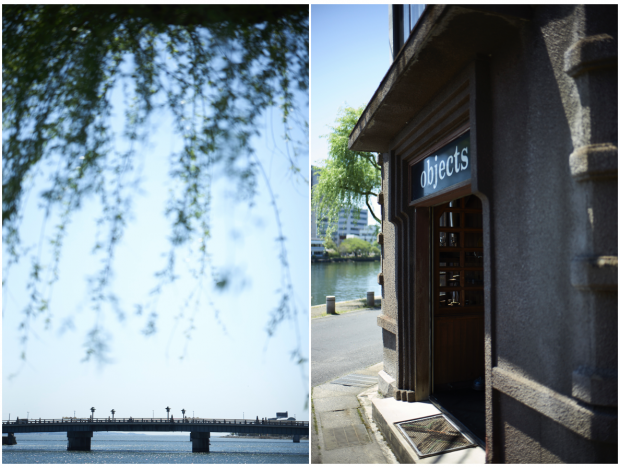 The shop stands along the Ohashigawa (大橋川) River with swaying willows. This atmospheric building was converted from a tailor’s shop more than 70 years old.
The shop stands along the Ohashigawa (大橋川) River with swaying willows. This atmospheric building was converted from a tailor’s shop more than 70 years old.
Sasaki-san opened this shop along the Ohashigawa River near Matsue Castle in 2011. The shop has gradually gained a reputation among pottery lovers for its excellent selection, and is now so popular that many people from all over the country travel to Matsue to visit the shop. In addition to ceramics made by the ‘Moriyama gama (森山窯)’, Hakujikobo, ‘Yumachi gama (湯町窯)’, ‘Shusai gama (『出西窯)’ and other Shimane kilns, the shop also carries a wide range of handmade products from around Japan, such as ceramics from Mashiko (益子) and glass from Okayama (岡山). Left: Beautiful teacups with a unique blue colour (2,160 yen, incl. tax) are from the Moriyama Kiln in Shimane, which was established by the last apprentice of Kawai Kanjiro. Right: Plates using the zogan (象嵌) technique are by Shimaoka Katsura (島岡桂) of Mashiko (5″ plates, 4,050 yen, incl. tax, etc.).
Left: Beautiful teacups with a unique blue colour (2,160 yen, incl. tax) are from the Moriyama Kiln in Shimane, which was established by the last apprentice of Kawai Kanjiro. Right: Plates using the zogan (象嵌) technique are by Shimaoka Katsura (島岡桂) of Mashiko (5″ plates, 4,050 yen, incl. tax, etc.).
There is also an extensive section of old vessels, including Okinawan Makai (bowls) and Nagasaki Hasamiyaki (波佐見焼) pottery. Sasaki says: “Old vessels have the inherent beauty and robust presence of things made by hand. When I choose modern items, I also choose those that look good alongside old vessels.”. He says that folk art and its lineage makers’ vessels have such essential beauty and presence.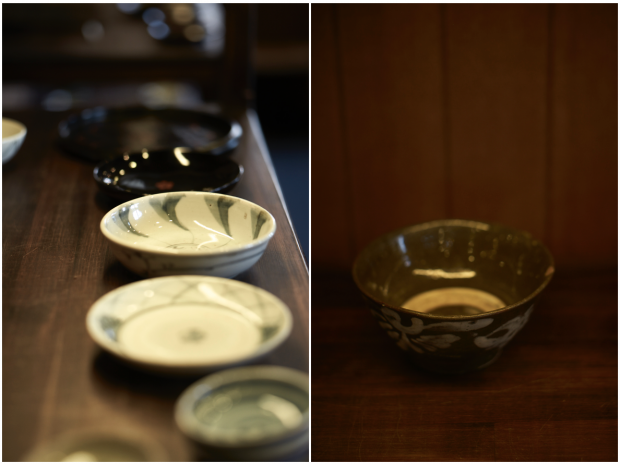 Old vessels, including Okinawan Makai (bowls), are also on display.
Old vessels, including Okinawan Makai (bowls), are also on display.
In the shop, there are many other things of interest in addition to vessels, one of which is the ‘Dobin no tsuru (土瓶の弦=clay pot string)’. One of these is made by Yamano Takahiro (山野孝弘) of Matsue. “When you put a good string on it, the quality of the dobin (土瓶=clay pot) goes up a notch. It changes so much that you can’t help but laugh. There are few craftsmen left, but Mr Yamano’s strings are superb in terms of thickness, curves and the way they are sharpened. We stock thicker strings that are easy to use and hold”. The indigo-dyed cotton strips from around the Meiji era displayed on the wall also caught the eye. “They were woven in Izumo and Matsue in daily life, and four of them were joined together to make a duvet cover. There are many auspicious patterns, such as pine, bamboo and plum, and they are simple and sleek.”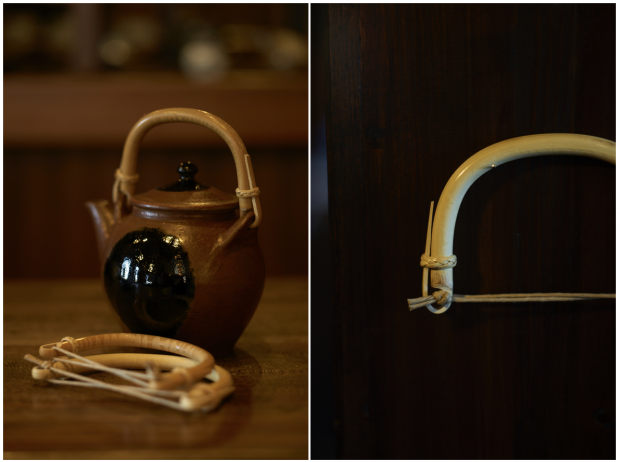 The beautiful strings, which “elevate the quality of the dobin”, are made by Yamano Takahiro of Matsue, from 2,160 yen (incl. tax). The dobin on the left is Mr Sasaki’s personal possession.
The beautiful strings, which “elevate the quality of the dobin”, are made by Yamano Takahiro of Matsue, from 2,160 yen (incl. tax). The dobin on the left is Mr Sasaki’s personal possession.
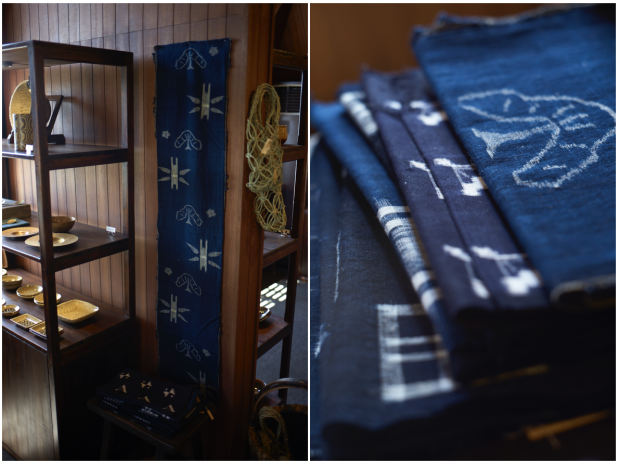 Indigo-dyed cloth from around the Meiji period, dead stock in good colour and condition. Dyed with auspicious patterns. 1 piece, 5,400 yen (incl. tax)
Indigo-dyed cloth from around the Meiji period, dead stock in good colour and condition. Dyed with auspicious patterns. 1 piece, 5,400 yen (incl. tax)
Whenever you ask her about anything in her shop, she will politely and clearly explain everything from the background and history of the item to the story behind its creator. “What is that plump bowl on the shelf?”, “This is called a ‘Bote Bote chawan (ぼてぼて茶碗)’, a bowl used by the common people in the Matsue area…”. It’s fun to overhear the conversations of other customers, and it reminds us once again that this is what the joy of shopping in a shop is all about.
objects
Address 2-8, Higashi-Honcho, Matsue City, Shimane
Opening hours: 11am – 7pm
Closed on an irregular basis
15 min walk from JR Matsue Station
-Photo by Shinohara Hiroaki (篠原宏明)
This article is translated from https://intojapanwaraku.com/rock/travel-rock/1441/








